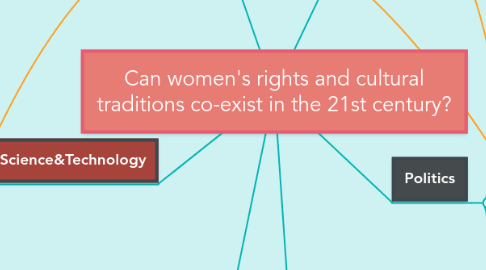Can women's rights and cultural traditions co-exist in the 21st century?
by Aizhan 17


1. Culture
1.1. Cultural and religious beliefs make a birth of a son more preferable for parents due to lineage, inheritance, identity, status, and economic security.
1.2. Forced marriage is mostly recognized as a cultural practice due to its occurrence among ethnic minorities, migrant communes.
2. Science&Technology
2.1. Indian women are paid less attention in the health sphere which leads to the poor immune system, high fatality level among Indian females, etc. Also there is a cultural and religious obstacle like the reluctance to be examined by male doctors.
2.2. Girls are underrated in the educational system, which leads to lower rates in literacy among women and affects the employment level as well too.
2.3. From psychological perspectives, there is high risk of mental injuries in forced unions, such as constant feeling of fear, anxiety and depression, which make the female vulnerable and easily controllable by anyone else.
3. Ethics
3.1. There are high rates of violence against women in India, where sexual harassment occurs every 42 minutes, women's kidnapping every 43 min while every 93 minutes a women is burnt for dowry.
3.1.1. According to the WHO, the violence against women occurs to be a huge health issue.
3.2. Early marriage is a concern for Indian girls, about 39000 girls are being forced for the marriage DAILY, so that means 27 girls get married in India a MINUTE.
3.2.1. It is defined by global society that forced marriage is the crime against human rights, violating a plenty of norms of the international human rights. These contain right of freely enroll into marriage, to bodily and sexual integrity.
